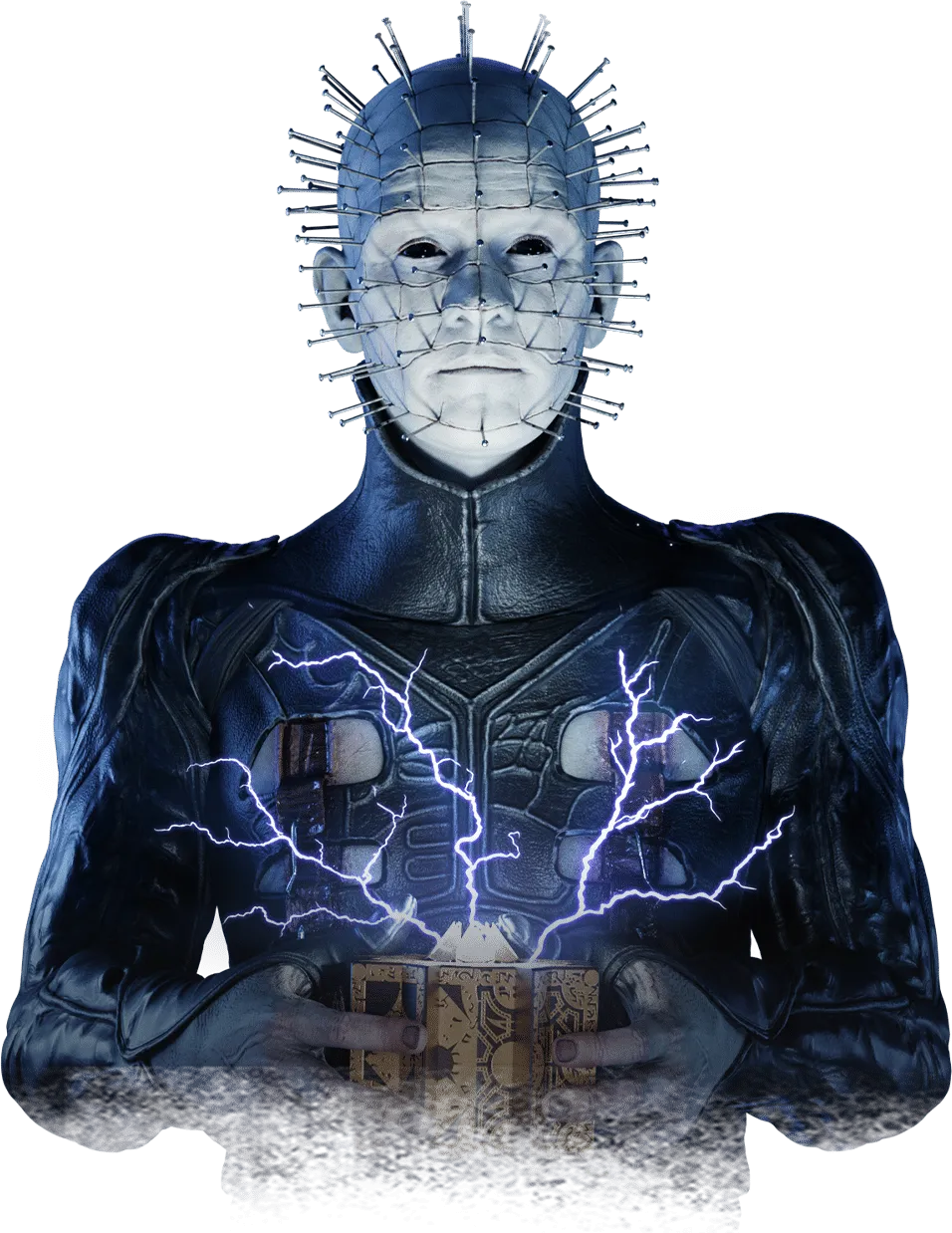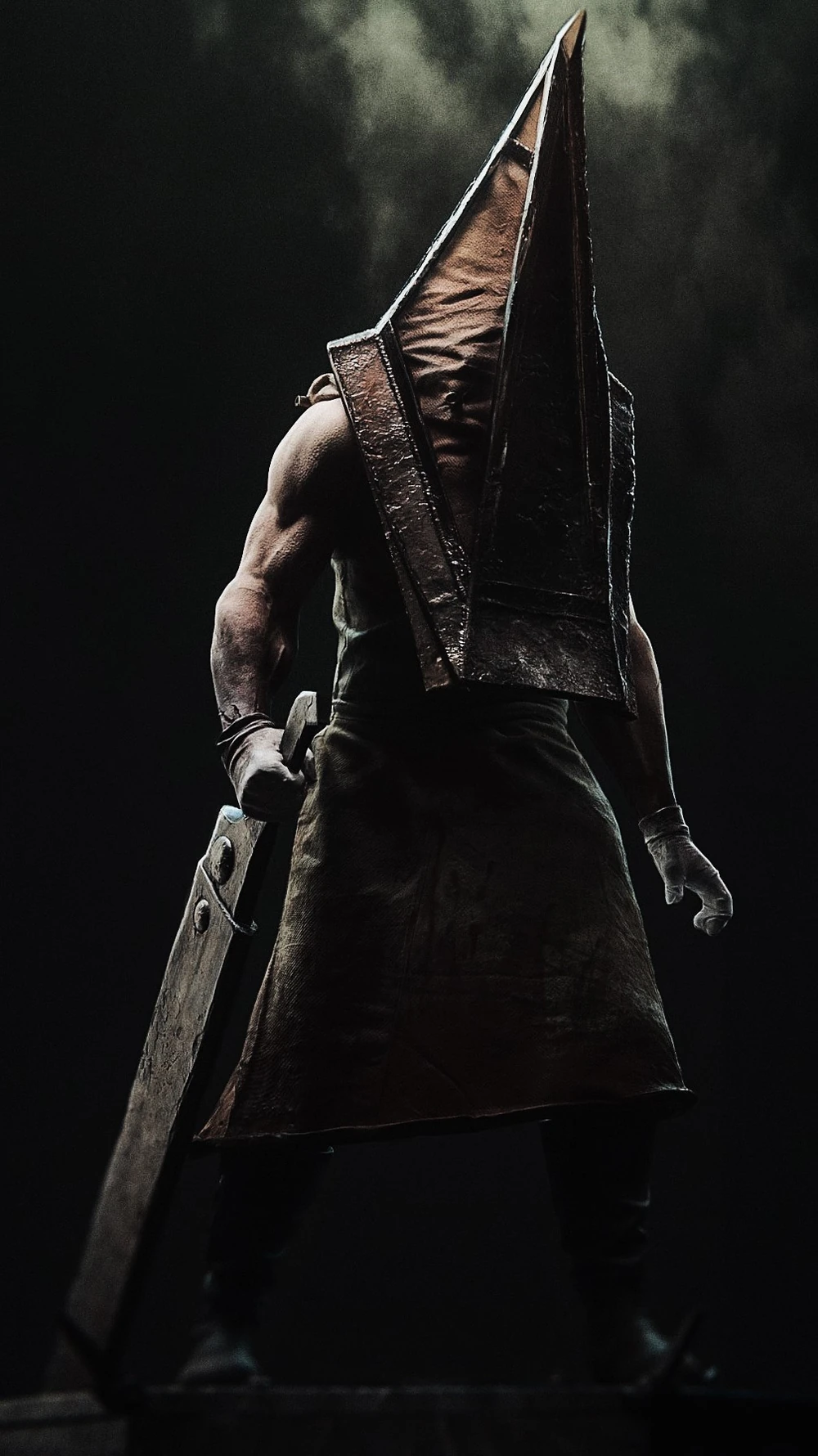In the depths of hellish horror mythology, few figures are as visually and psychologically haunting as:
- Pyramid Head, the silent executioner from Silent Hill, a manifestation of torment and punishment.
- Pinhead, the sadistic priest of the Cenobites from Hellraiser, a being of order, pain, and infernal pleasure.
Both come from twisted realities where pain, sin, and trauma are currency—but only one can reign supreme if these two hellbound titans were to clash.
Round 1: Origin & Nature
Pyramid Head (Silent Hill)
- Not a “being” in the traditional sense—he’s a manifestation of guilt, usually tied to the psyche of James Sunderland in Silent Hill 2.
- Exists to punish and torment—often dragging victims into horrifying scenarios or executing others as a form of symbolic judgment.
- Has no real personality or voice. He is pure purpose, guided by metaphysical forces.
Pinhead (Hellraiser)
- Once human (Captain Elliot Spencer), now transformed into a Cenobite—a demon-like being from Hell’s Labyrinth.
- Serves Leviathan, the god of flesh, order, and suffering.
- Summoned via the Lament Configuration, a puzzle box that opens the door to unimaginable agony and desire.
Winner: Pinhead
Pinhead is a conscious, intelligent agent of cosmic horror, while Pyramid Head is a construct, powerful but tethered to a purpose and a place.
 Round 2: Abilities & Weapons
Round 2: Abilities & Weapons
Pyramid Head
- Wields the iconic Great Knife, a massive, rusted blade capable of cleaving bodies in half.
- Near-invincible: can absorb bullets, survive explosions, and shrug off most attacks.
- Can drag giant spears, use brute force, and teleport in certain games.
- Often appears in multiples and can manifest at will in Silent Hill’s otherworld.
Pinhead
- Wields hooked chains that appear from thin air to restrain, flay, or tear apart victims with surgical precision.
- Has reality-warping abilities: can stop time, teleport, reshape environments, and summon fellow Cenobites.
- Commands psychological torment, speaking in chilling monologues while dealing suffering like a theologian of hell.
Winner: Pinhead
While Pyramid Head is a beast of brute horror, Pinhead’s powers are cosmic and cerebral, mixing physical and mental torture with surgical finesse.
Round 3: Weaknesses
Pyramid Head
- Not immortal—when his purpose is fulfilled, he ceases to exist (as seen in Silent Hill 2).
- Context-bound—his power is often limited to Silent Hill or the mental construct of someone’s guilt.
- No will of his own—he follows a script laid by the town’s judgment.
Pinhead
- Can be defeated, but only under rare circumstances—like being reminded of his humanity, or being tricked with the Lament Configuration.
- Vulnerable to specific rituals or high magic within the Hellraiser universe, but not easily undone.
- Has rules—won’t attack without proper summoning or justification, due to Cenobite code.
Winner: Pinhead
While both have exploitable weaknesses, Pyramid Head’s entire existence depends on context, while Pinhead exists independently as a force of eternal torment.
 Round 4: Symbolism & Psychological Impact
Round 4: Symbolism & Psychological Impact
Pyramid Head
- Represents guilt, sexual repression, punishment, and penance—his presence is deeply tied to the psychological state of his target.
- Unnerving because of his silence, ritualistic behavior, and brutal executions.
- Embodies silent torment—a reminder that the mind can be the cruelest prison.
Pinhead
- Symbolizes pleasure and pain as indistinguishable, and the cost of curiosity or forbidden desire.
- His dialogue and presence elevate him to a philosophical villain, whose menace comes not only from violence but from persuasion.
- Is elegant horror, often toying with ideas of consent, morality, and theology.
Winner: Tie
Both characters are terrifying on a metaphysical level, but they symbolize different internal horrors—Pyramid Head the punisher, Pinhead the seducer of damnation.
Round 5: Battle Scenario
Location: A shifting dimensional corridor between Silent Hill and the Labyrinth of Leviathan.
- Pyramid Head emerges from rusted gates, dragging his Great Knife, his faceless head glinting with blood and metal.
- Pinhead steps through a tear in reality, surrounded by floating chains and the distant cries of the damned.
The fight begins:
- Pyramid Head charges with brute force, smashing the floor and walls with his blade.
- Pinhead calmly summons hooked chains, which latch onto Pyramid Head, tearing into him—but Pyramid Head doesn’t scream. He doesn’t feel pain—he is pain.
- As Pyramid Head strikes, Pinhead teleports, materializing behind him, whispering ancient Latin incantations, summoning more chains.
- Yet Pyramid Head resists mind control—he has no mind to sway. He swings again, shattering a pillar and knocking Pinhead across the room.
- The fight becomes one of brute will vs orchestrated agony, a clash between purpose and philosophy.
Eventually, realizing he cannot break what has no ego or fear, Pinhead traps Pyramid Head in an eternal Cenobite loop, preserving him in a timeless cage to study forever.
Final Verdict: Who Wins?
| Category | Winner |
|---|---|
| Origin & Nature | Pinhead |
| Abilities & Weapons | Pinhead |
| Weaknesses | Pinhead |
| Symbolism & Impact | Tie |
| Battle Scenario | Pinhead |
🏆 Overall Winner: Pinhead (4-0-1 Victory) 🏆
Final Thought
- Pyramid Head is a relentless, silent punisher—a force of personal damnation. He’s terror on two legs, but only functions within specific symbolic frameworks.
- Pinhead, on the other hand, is a general of Hell, with intelligence, magic, command over pain, and a timeless existence.
In the battle between silent judgment and sadistic philosophy, the priest of hell outmaneuvers the butcher of guilt.
👑 Winner: Pinhead, Hell’s High Priest of Pain

Comments powered by CComment